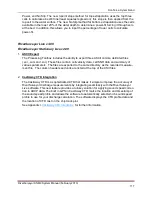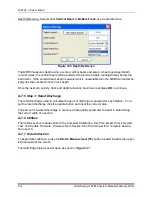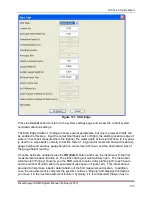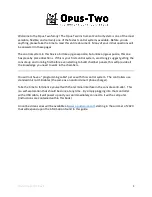
SonTek, a Xylem brand
RiverSurveyor S5/M9 System Manual (February 2013)
121
o
Depths less than 2 meters use 0.1 m cells
o
Depths 2-4 meters use 0.2 m cells.
o
Depths greater than 4 meters use 0.4 m cells.
-
In water depths greater than 5.0 m, the system uses 1 MHz incoherent pings with the
cell size optimized based upon the current water depth.
o
Depths less than 10 meters use 0.5 m cells
o
Depths 10-20 meters use 1.0 m cells.
o
Depths greater than 20 meters use 2.0 m cells.
The RiverSurveyor SmartPulse
HD
uses a powerful CPU with multi-thread parallel processing
routines; some key advantages from this are listed below.
-
The RiverSurveyor runs multiple pings types from multiple frequencies at the same time.
At any given site, the RiverSurveyor may use a total of 8-10 different ping types; at any
given moment, it is typically running 3-5 ping types simultaneously.
-
The parallel processing capabilities allows the system to collect new acoustic pings while
at the same time analyzing data from the last set of pings. This continuous evaluation of
data allows the system to modify operation, on a second by second basis, to ensure it
always uses the best ping types for the conditions at that moment.
-
In the case of the M9, the RiverSurveyor has the added advantage of using multiple
acoustic frequencies for velocity profiling. It combines different frequencies and different
Doppler processing techniques to optimize performance for the current operating condi-
tions. The added power and flexibility provided by the additional acoustic frequency is
significant, and makes a major difference in final instrument performance.
-
The speed of the CPU means that the RiverSurveyor has no limits in the type of pro-
cessing or analysis that is done. The final performance of the RiverSurveyor is limited
only by the physics of underwater sound.
SmartPulse
HD
processing should be able to automatically adapt to any operating condition with-
out any user input. Despite this (as a safety precaution), the updated RiverSurveyor Live PC
and Mobile software includes an option to disable SmartPulse
HD
processing.
-
This option should be needed only rarely for very particular conditions where the
SmartPulse
HD
algorithms may fail.
-
We have not yet encountered conditions where SmartPulseHD does not work properly,
but it is conceivable.
-
If you use the RiverSurveyor Live option to disable SmartPulse
HD
processing, the system
will run incoherent pings only exactly as done with previous firmware releases.
Appendix G. Stationary Measurement Software
G-1. Overview
The SonTek
RiverSurveyor Stationary Live
software uses an alternative approach to the stand-
ard moving boat method of measuring water currents and discharge. Both methods use an
Acoustic Doppler Profiler (ADP) to measure water currents. When using the
RiverSurveyor Sta-















































